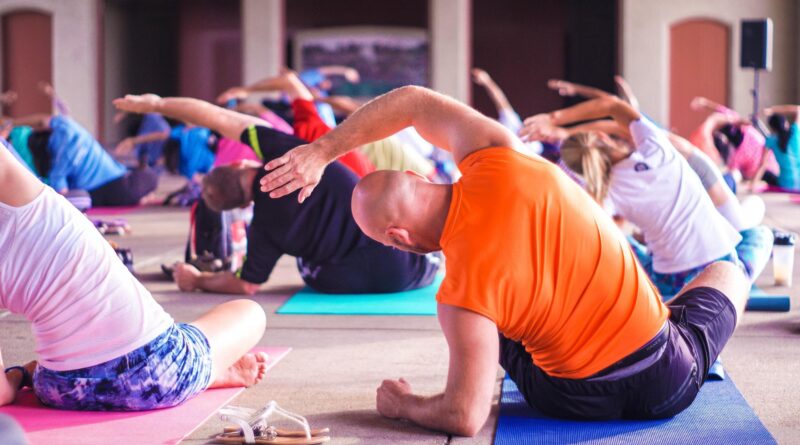What is Physical Fitness?
Physical fitness encompasses the harmonious functioning of your body’s systems, facilitating overall health and the seamless execution of everyday tasks. Efficiency is key, allowing for the completion of daily activities with minimal effort.
A person in good physical shape can tackle academic responsibilities, manage household duties, and still have ample energy for recreational pursuits. Additionally, they possess the capability to adeptly handle routine scenarios like yard work, job-related tasks, or participating in school activities such as marching in the band.
Furthermore, a physically fit individual is well-prepared to respond to emergencies, whether it involves sprinting to seek assistance or assisting a distressed friend.
The Parts of Physical Fitness
Physical fitness encompasses a total of 11 components, classified into two categories: 6 health-related and 5 skill-related. Both sets play a crucial role in optimal performance across various physical activities, including sports.
The health-related components, specifically acknowledged for their impact on reducing chronic disease risk and promoting overall well-being, consist of:
- Body Composition: Understanding the distribution of body fat relative to lean body mass.
- Cardiorespiratory Endurance: Enhancing the efficiency of the cardiovascular and respiratory systems.
- Flexibility: Achieving a full range of motion in joints and muscles.
- Muscular Endurance: Sustaining muscle contractions over an extended period.
- Power: The ability to generate force rapidly.
- Strength: The maximum force a muscle or muscle group can exert.
These health-related components not only contribute to overall fitness but also enhance effectiveness in daily activities.
On the other hand, the skill-related components are tailored to excel in activities demanding motor skills. While they have connections to health, their primary focus is on performance in sports and similar endeavors. The skill-related components include:
- Speed: The ability to move quickly.
- Agility: Changing direction swiftly and accurately.
- Coordination: Harmonizing movements of different body parts.
- Balance: Maintaining stability, particularly crucial in preventing falls, especially among older adults.
- Reaction Time: The swiftness of response to stimuli, relevant in situations like avoiding accidents, particularly in driving.
Health-Related Physical Fitness
Consider a runner – someone who can likely cover long distances without fatigue, showcasing commendable fitness in at least one facet of health-related physical fitness. However, it’s essential to recognize that excelling in one aspect, such as endurance, doesn’t automatically translate to proficiency in all six parts.
While running is a fantastic physical activity, it doesn’t guarantee comprehensive fitness across the health-related components. Much like our runner, individuals may find themselves more adept in certain fitness domains than in others.
Running, in its nature, emphasizes cardiorespiratory endurance, but a holistic evaluation involves considering body composition, flexibility, muscular endurance, power, and strength. Just as our runner might shine in endurance, she may not necessarily exhibit the same level of proficiency in other areas.
In a noteworthy shift, power, once categorized as a skill-related component of fitness, has now been reclassified as a health-related aspect. This change is substantiated by a report from the independent Institute of Medicine, shedding light on the profound connection between physical power and overall health.
According to the report, power is intricately linked to well-being, an elevated quality of life, diminished susceptibility to chronic diseases and premature mortality, as well as improved bone health.
The evidence presented underscores the significance of power in fostering overall health, emphasizing its role in promoting longevity and reducing the risk of chronic ailments.
Read Also: Everything You Need to Know About Moen Garbage Disposal
Furthermore, the report highlights the importance of power and activities geared towards enhancing it, especially in cultivating healthy bone development in children and teenagers.
This reclassification underscores the evolving understanding of power’s multifaceted impact on health, encompassing not only athletic performance but also broader aspects of well-being.
Reflecting on your personal fitness levels across the six health-related components is a valuable exercise for overall well-being. To maintain good health, it’s crucial to be adequately fit in each of these areas.
Achieving total fitness significantly reduces the risk of hypokinetic conditions – health issues often exacerbated by insufficient physical activity, such as heart disease, high blood pressure, diabetes, osteoporosis, colon cancer, or high body fat levels. Further insights into hypokinetic conditions are available in subsequent chapters of this book.
Being physically fit extends beyond preventing health problems; it translates into a better state of wellness. People who are consistently fit tend to experience an improved sense of well-being – feeling better, looking better, and possessing greater energy levels.
It’s important to note that one doesn’t need to be an elite athlete to enjoy good health and wellness. Regular physical activity, tailored to individual capabilities and preferences, can significantly enhance health-related physical fitness for anyone. Embracing a commitment to regular exercise is a positive step toward achieving and maintaining overall health and well-being.
Skill-Related Physical Fitness
Similar to the scenario in health-related physical fitness, the runner in our example may not necessarily excel uniformly in all aspects of skill-related physical fitness.
Different sports demand varied components of skill-related fitness, and proficiency in one doesn’t guarantee mastery in all. Each sport may prioritize specific skills; for instance, a skater may showcase remarkable agility but might not demonstrate the same level of quick reaction time.
Natural aptitude also plays a role, as some individuals may possess innate abilities in certain skill-related fitness areas while showing less inclination in others. It’s a reminder that everyone has unique strengths and areas for improvement in the realm of skill-related fitness.
Regardless of your specific skill-related fitness scores, the beauty lies in the diversity of physical activities available. No matter your proficiency level, there’s a wide array of physical activities to explore and enjoy.
Whether you gravitate towards sports or other recreational pursuits, finding an activity that aligns with your preferences ensures that you can engage in fulfilling physical exercise.
Indeed, it’s essential to keep in mind that achieving good health is not solely contingent on excelling in skill-related physical fitness. Instead, it stems from engaging in activities intentionally designed to enhance health-related physical fitness.
This holds true for individuals across the spectrum, encompassing both accomplished athletes and those who may perceive themselves as less proficient in athletic pursuits.
The key is participating in activities that contribute to overall health, irrespective of one’s prowess in specific skills. Whether you’re a top-tier athlete or someone who doesn’t identify as particularly athletic, the benefits of good health are accessible to all through purposeful engagement in activities geared towards improving health-related physical fitness.
The inclusivity of this approach emphasizes that everyone, regardless of their athletic background, can enjoy the rewards of a healthy and active lifestyle.
As mentioned earlier, health-related fitness presents a dual advantage by not only contributing to overall well-being but also enhancing performance in various sports and activities. For instance, cardiorespiratory endurance not only fortifies your cardiovascular health, reducing the risk of heart disease, but also proves instrumental in excelling in sports like swimming and cross-country running.
Likewise, strength plays a pivotal role in sports such as football and wrestling, where power and force are significant factors. Muscular endurance becomes a crucial asset in sports like soccer and tennis, where sustained muscle activity is essential. Flexibility, on the other hand, is particularly advantageous in sports like gymnastics and diving, enhancing the range of motion and preventing injuries.
The power component proves valuable in track activities like the discus throw and the long jump, showcasing the explosive force required in such events. Maintaining a healthy body fat percentage is equally important, as it contributes to overall efficiency in various activities.
In essence, health-related fitness not only safeguards your well-being but also acts as a cornerstone for excelling in a diverse range of sports and physical activities. The synergy between health and performance highlights the holistic impact of maintaining a well-rounded fitness profile.
In conclusion, the intricate interplay between health-related fitness and overall well-being underscores the multifaceted benefits of maintaining a balanced physical fitness profile.
As we navigate the realms of cardiorespiratory endurance, strength, muscular endurance, flexibility, power, and body composition, it becomes evident that these components not only safeguard our health but also empower us to excel in a myriad of sports and activities.
Health-related fitness serves as a powerful ally in the ongoing quest for optimal health. By cultivating cardiorespiratory endurance, we fortify our cardiovascular system, reducing the risk of heart disease and enhancing our performance in activities such as swimming and cross-country running.
Strength, a stalwart companion, propels us to excellence in sports like football and wrestling, embodying the essence of power and force. Muscular endurance, flexibility, and power each find their unique roles in sports ranging from soccer and tennis to gymnastics and track events, contributing to enhanced performance and reduced injury risks.
Additionally, maintaining a healthy body fat level emerges as a key factor, optimizing overall efficiency across diverse activities. It is crucial to acknowledge that health-related fitness is inclusive and accessible to individuals of varied athletic backgrounds.
Whether one identifies as an elite athlete or views themselves as less athletically inclined, the benefits of a well-rounded fitness routine are attainable and transformative.
As we embrace the holistic nature of health-related fitness, we recognize its role not only in preventing hypokinetic conditions but also in elevating our quality of life. In essence, the pursuit of health-related fitness transcends mere physical activity; it becomes a journey toward a vibrant and resilient well-being, where the dividends of good health extend far beyond the realm of sports into the fabric of our everyday lives.
Read Also: Complete List of High Protein Foods you Should Know About



